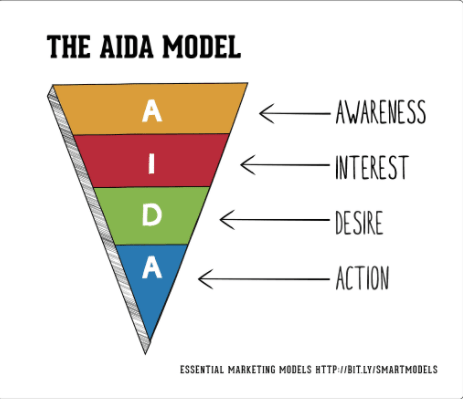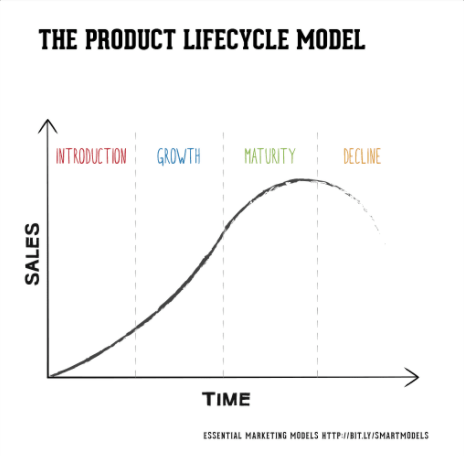Choosing an advertising model that will guide your business is no small feat. Learn about what an advertising model is, explore the four main types, and select the right one for your business.
Convincing your audience to buy your products or invest in your services is easier said than done. Behind all types of advertising, there is a psychological aspect of persuasion that encourages all audiences to try or use a business.
An advertising model serves as a true blueprint for marketers regardless of the advertising medium. It is defined as the strategic use of an advertising campaign or message to reach a specific target audience.
In order to use an advertising model effectively, businesses must understand their target market and the advantages of each medium.
This article dives into four different advertising models and how businesses can use them to their strategic advantage, depending on their business goal.
Select an Advertising Model
1. AIDA Advertising Model
2. DAGMAR Advertising Model
3. Product Life Cycle Model
4. Ehrenberg Model
AIDA Advertising Model
One of the more popular advertising models is known by the acronym AIDA.
AIDA stands for awareness, interest, desire, and action.

The AIDA advertising model is the process that customers go through before they decide on a particular product or service.
To break it down, a business wants to capture someone’s “awareness” or attention. After that, the customer will have some sort of “interest,” which will deepen into “desire.” In the end, they will take “action” by purchasing or using your product or service.
For advertising campaigns, businesses can build campaigns that strategically accomplish all of these points. In the end, you can divide your campaign into segments that focus on specific points in the model to build momentum or cultivate more interest with various parties.
DAGMAR Advertising Model
The DAGMAR advertising model stands for “defining advertising goals for measured advertising results.”
While this model is similar to AIDA, it takes it a step further through effective goal setting. This model focuses on awareness, comprehension, conviction, and action.
Breaking this all down, the first step of the DAGMAR model is to decide exactly what you want to achieve and determine how to measure success.
After determining your target audience and other perceptions people might have regarding your brand, you will then start the awareness and comprehension phases.
By structuring everything to fit within the components of this model, your team will be able to create social media and advertising campaigns and copy that will establish all of the goals you have set in place.
Product Life Cycle Model
The product life cycle advertising model continues four separate stages that allows users to think on a larger scale. The four stages of the product lifecycle model are introduction, growth, maturity, and decline.

This advertising model forces users to think about the bigger picture. It also makes users think about your campaigns and other offerings in terms of sales and time.
Based on the stage your product or service is in, you’ll be thinking of the number of scales, competitors, distribution channels, and other factors that can impact the growth of your offering in the long run.
Ideally, your product will enter the maturity stage where you can start building on the promotional elements like including creative content and interactive elements in your larger re-marketing efforts.
Ehrenberg Model
Founded by Andrew Ehrenberg, the Ehrenberg, or ATRN model, l focuses on the persuasion element of advertising.
Ehrenberg noticed that while consumers can be happy with the product they receive, they’ll eventually become dissatisfied and look for alternatives.
He outlined the following stages: awareness, trial, reinforcement, and nudging.

This model relies on both the service provider and consumer. While it is the primary responsibility of the business or organization to get the potential customer involved in the product, it is up to that consumer to try it.
Outside factors from the business can reinforce the consumers by reminding them of the hopefully positive experience, and this would in turn “nudge” them to make another purchase.
It is up to the business to factor in all potential influences while crafting their advertising model.
Choose the Right Advertising Model
There isn’t a “right” way to persuade people to try out your services or order your product, but depending on your goals, you can use a specific advertising model to make your bottom line a reality.
The effective use of an advertising medium or great campaign should be able to adapt to any advertising model. Whichever advertising model you choose, you can use it as an outline that guides your overall digital content strategy.
A well-planned out advertising model should validate your company’s goals and mission. If the advertising model your company chooses to invest in doesn’t have an impact, it is time to revise. Thankfully, there are even more advertising models to choose from.